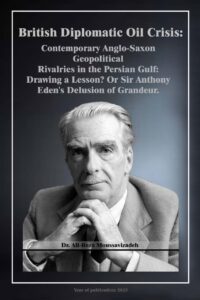The British Imperial Establishment, Post Imperial Era, and the ‘Churchillian’ World View, 1945-2016. (Adjustments & Challenges in Contemporary British Diplomatic Strategy)
84
colonial markets without any difficulty and still have plenty of iron and steel
products for export
to America and Europe and cheap textiles that could compete
more than favourably with Indian home wares.
This goes back to the first half of
the nineteenth century when the parliament in Britain increasingly
adopted the
free trade ideas of Adam Smith which meant accepting the approach that
restrictive
trading barriers should be broken down in favour of one open
international trading unit where trade goods
could move freely for sale in the most
suitable market. The in-built advantage of this for Britain was
that with her
industrial and technological lead in a free trading world she could shop around
for
raw materials from the cheapest market while her manufactured goods could
easily swamp those of other
countries.
In
principle, however, a world of free trade did not require a huge empire,
since a colony would provide no
commercial advantage over a non-colonial area.
Yet Britain retained and expanded her empire because it
provided a very ready
outlet. While Britain generally purchased her imports from wherever they
were
cheapest, such as wheat from the United States or Russia rather than from Canada,
it was found
that Britain did in fact have commercial advantages by possessing
an empire. Simply, it was the stability
of colonial markets and the near monopoly
conditions that Britain was able to exercise in those areas.
So, the Australian
colonies did not require much cultivation to ensure that they bought British.
But,
in a free trade world, such a monopoly could easily drift away. For example,
towards the end of
the nineteenth century, Britain was increasingly to find that
Canadian trade turned towards the United
States.
As a
result, Britain’s power arising from trading wealth was based more
heavily upon the rest of the world
than upon the empire in both exports and
imports. As to the former, Germany, Holland and Belgium were the
biggest
buyers of British goods followed by the United States. At this time, although
Britain no
longer looked to the colonies as a major trading partner many of the
Pages: 1 2 3 4 5 6 7 8 9 10 11 12 13 14 15 16 17 18 19 20 21 22 23 24 25 26 27 28 29 30 31 32 33 34 35 36 37 38 39 40 41 42 43 44 45 46 47 48 49 50 51 52 53 54 55 56 57 58 59 60 61 62 63 64 65 66 67 68 69 70 71 72 73 74 75 76 77 78 79 80 81 82 83 84 85 86 87 88 89 90 91 92 93 94 95 96 97 98 99 100 101 102 103 104 105 106 107 108 109 110 111 112 113 114 115 116 117 118 119 120 121 122 123 124 125 126 127 128 129 130 131 132 133 134 135 136 137 138 139 140 141 142 143 144 145 146 147 148 149 150 151 152 153 154 155 156 157 158 159 160 161 162 163 164 165 166 167 168 169 170 171 172 173 174 175 176 177 178 179 180 181 182 183 184 185 186 187 188 189 190 191 192 193 194 195 196 197 198 199 200 201 202 203 204 205 206 207 208 209 210 211 212 213

